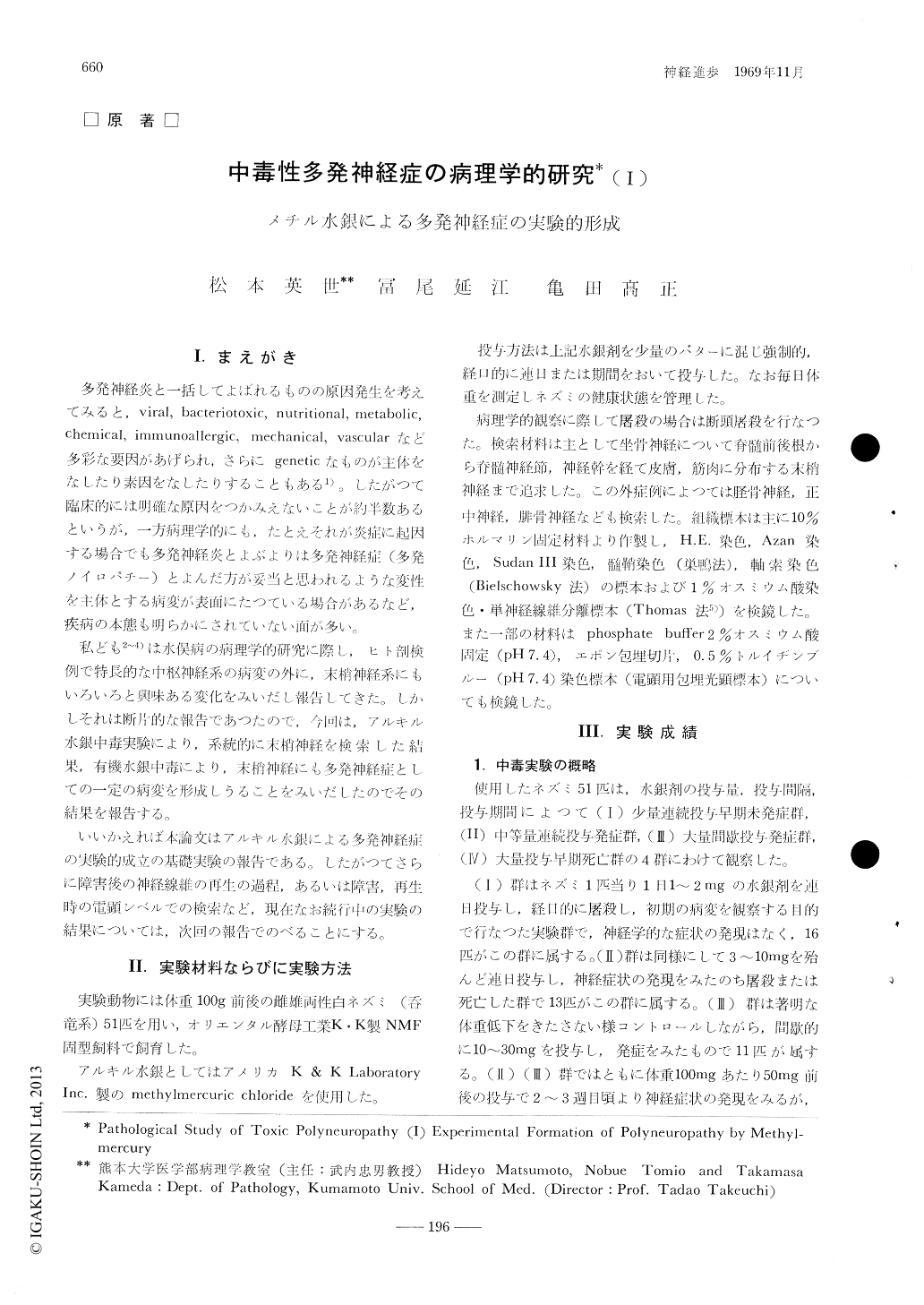Japanese
English
- 有料閲覧
- Abstract 文献概要
- 1ページ目 Look Inside
Ⅰ.まえがき
多発神経炎と一括してよばれるものの原因発生を考えてみると,viral,bacteriotoxic,nutritional,metabolic,chemical,immunoallergic,mechanical,vascularなど多彩な要因があげられ,さらにgeneticなものが主体をなしたり素因をなしたりすることもある1)。したがつて臨床的には明確な原因をつかみえないことが約半数あるというが,一方病理学的にも,たとえそれが炎症に起因する場合でも多発神経炎とよぶよりは多発神経症(多発ノイロパチー)とよんだ方が妥当と思われるような変性を主体とする病変が表面にたつている場合があるなど,疾病の本態も明らかにされていない面が多い。
私ども2〜4)は水俣病の病理学的研究に際し,ヒト剖検例で特長的な中枢神経系の病変の外に,末梢神経系にもいろいろと興味ある変化をみいだし報告してきた。しかしそれは断片的な報告であつたので,今回は,アルキル水銀中毒実験により,系統的に末梢神経を検索した結果,有機水銀中毒により,末梢神経にも多発神経症としての一定の病変を形成しうることをみいだしたのでその結果を報告する。
Fifty-one adult and weanling rats have been administered per os with methylmercuric chloride and the resulting pattern of degeneration in peripheral nerves has been studied.
Methylmercuric chloride can produce disturbance of the peripheral nerves at a dose of 5mg per day, totalling 40-60mg in three weeks.
Histopathologically, methylmercuric chloride predominantly affects myelin sheath, while axon fibers are less damaged. The pattern of degeneration of myelin sheath is segmental demyelination. These disturbances begin to occur usually in Ranvier's node.

Copyright © 1969, Igaku-Shoin Ltd. All rights reserved.


